Ghost of Tsushima pays homage to the samurai films of Akira Kurosawa.
Of course, Kurosawa made more than just samurai films. He directed over 30 films in a career that stretched half a century from his first credited work on Sanshiro Sugata to Mâdadayo. Kurosawa is rightly regarded as one of the most important and influential filmmakers of the 20th century. Dramas like Ikiru and High and Low speak to both the universal human condition and particularly to the culture of postwar Japan.
However, Kurosawa’s samurai films remain his most popular and accessible works. Even audiences that have never watched movies like Rashomon, Seven Samurai, or Yojimbo will be familiar with their influence on western pop culture. Ghost of Tsushima is not even the first video game to cite Kurosawa as a reference. Seven Samurai 20XX was released in 2004, an attempted update of Kurosawa’s classic. Nioh spent a decade in development based on an unused Kurosawa script.
The enduring appeal of Kurosawa’s samurai films speaks to their unique position in the cultural canon. They are at once archetypal and deconstructive, simultaneously a window into a set of cultural anxieties specific to the Japanese experience while also holding up a mirror to the larger world. It is rare that works of art can be all things to all people, but Kurosawa’s samurai films accomplish this.
A large part of Kurosawa’s success as an international filmmaker derives from his strength as a visual artist. Although he frequently collaborated with other writers on scripts, Kurosawa painted his own storyboards as a way of ensuring that his vision remained his own. Whether in black and white or color, Kurosawa had a strong eye for composition. This strong visual sensibility might explain how he was able to break out in a way that few non-English-language filmmakers could hope to.

As such, it is fitting that Ghost of Tsushima’s most overt and explicit homage to Kurosawa is visual in nature. The game affords the player the opportunity to switch to “Kurosawa Mode” from the menu. This transforms the game into a stark black-and-white landscape that recalls the striking contrast of Kurosawa’s most iconic and beloved samurai films: Rashomon, Seven Samurai, Throne of Blood, The Hidden Fortress, Yojimbo, and Sanjuro. Kurosawa’s family offered their blessing.
Even beyond their emphasis on visuals, Kurosawa’s films demonstrate that film was a truly global medium, even immediately after the Second World War. Kurosawa was heavily influenced by American and European artists. Even in terms of his samurai films, Throne of Blood and Ran were explicitly modeled on classic Shakespeare plays. Kurosawa looked to western director John Ford as an inspiration, musing, “When I’m old, that’s the kind of director I want to be.”
Kurosawa truly emerged as an auteur during the American occupation of Japan, and so it’s appropriate that a lot of his success came from synthesizing Western and Japanese art – particularly given the censorship in place in the lead-up to and during the Second World War. It is possible to read some of Kurosawa’s samurai films like Yojimbo as anxious about the modernization and westernization of post-war Japan, wryly using a samurai western film noir to make that point.
Of course, none of this exists in a vacuum. Although Kurosawa has somewhat reductively been described as “the most western of Japanese directors,” he has also had an outsized impact on American cinema. Steven Spielberg described Akira Kurosawa as “the pictorial Shakespeare of our time.” Sidney Lumet called him “the Beethoven of moviemaking.” George Lucas famously cited The Hidden Fortress as a major influence on Star Wars.
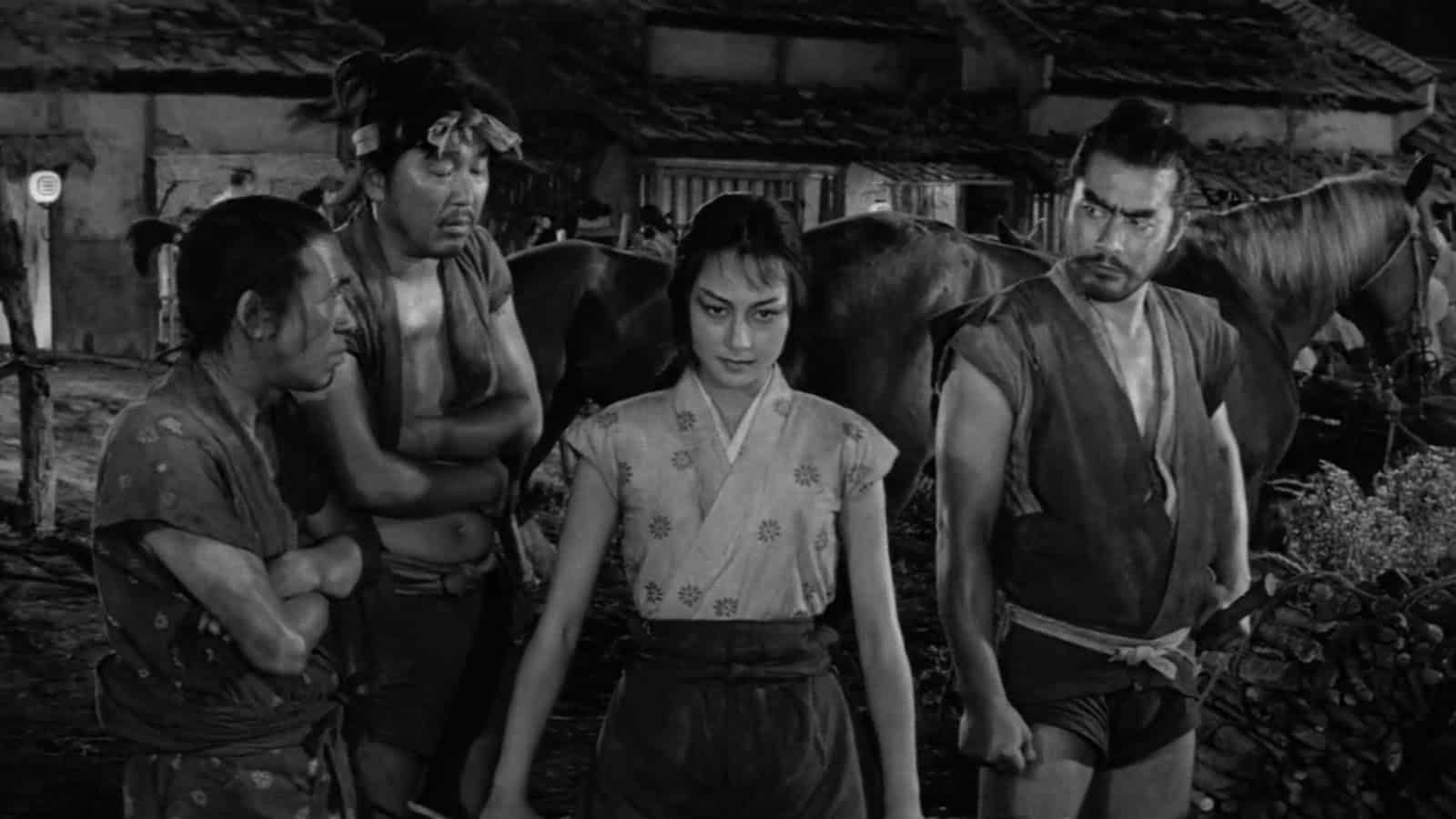
These influences all double back on one another. Kurosawa would draw on classic Hollywood westerns for samurai films like Seven Samurai and Yojimbo, only for later western directors to draw from those homages to create movies like The Magnificent Seven and A Fistful of Dollars. There’s something beautiful in how the American cowboy evolved from John Wayne and John Ford, through Tishiro Mifune and Akira Kurosawa, to Clint Eastwood and Sergio Leone.
Even within the specific confines of samurai cinema, Kurosawa manages to represent a perfect paradox: He is both John Ford and Sergio Leone. Kurosawa is obviously not the only Japanese director to make films about samurai, but he is the defining one. To many foreign audiences, Kurosawa’s films embody the very idea of what a samurai film looks like. The development team on Ghost of Tsushima can point to specific shots from Sanjuro that they wish to evoke.
However, Kurosawa also seems wary of the idea of the samurai. His family could reportedly trace their lineage back through samurai to 11th century warlord Abe no Sadato, and his father reportedly wore the samurai top knot when Kurosawa was a boy. However, as he emerged as a filmmaker, the samurai code of honor known as the Bushidō had perhaps been tainted by the Second World War. It was associated with the country’s refusal to surrender and the massive casualties that accrued as a result.
As such, Kurosawa’s films often seem ambivalent towards the romantic notion of samurai culture. Many of Kurosawa’s samurai films are predicated on the idea of the samurai as a relic of the past, even within their own period. Rashomon features a deceased samurai (Masayuki Mori) who speaks through a medium (Noriko Honma) to offer his account of a brutal crime. Not only is he a literal ghost, but his account is incomplete. He can impose no order on the chaotic events.
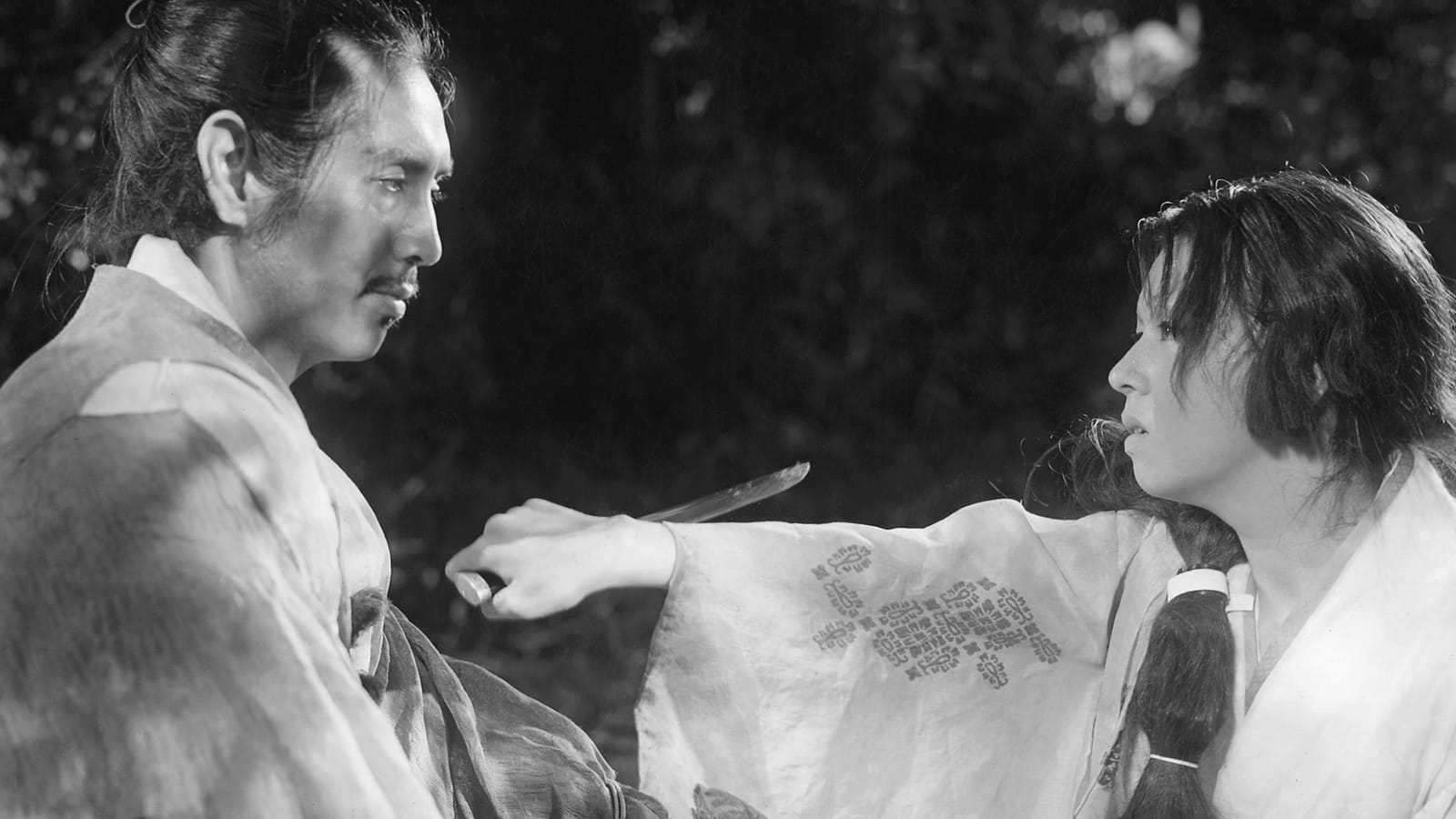
Seven Samurai features a group of soldiers assembled to protect villagers from bandits. Many of the samurai die in the attempt, and Seven Samurai makes it clear that the villagers are cynically exploiting their guardians’ nobility. Throne of Blood opens against a wasteland, with just a stone pillar marking the space where Cobweb Castle once stood, informing the audience that all the struggle and scheming within the film accounts for nothing.
The Hidden Fortress is perhaps Kurosawa’s most conventional and straightforward samurai narrative, but he opts to frame the story through the eyes of two peasants (Minoru Chiaki and Kamatari Fujiwara) who get swept up in a conventional epic. He waits over 20 minutes to introduce the actual samurai. Yojimbo and Sanjuro feature a wandering ronin (Toshiro Mifune), one who survives largely by eschewing the romance of the samurai.
In films like Yojimbo and Kagemusha, the arrival of firearms seems to signal the end of the era of the samurai. Films like Throne of Blood and Sanjuro decry the sort of violence that is necessitated by the samurai’s code of honor, suggesting that the way of the warrior is ultimately just the way of war. While the westerns that Kurosawa both invoked and inspired tend to end with a sense of nostalgia and the arrival of civilized order, Kurosawa’s samurai films often build to tragedy.
This is obvious even in the closing scenes of Sanjuro, which inspired so much of Ghost of Tsushima. The film finds the eponymous ronin swept up in a samurai romance involving a chamberlain (Yūnosuke Itō), a superintendent, and nine overeager samurai. The naivety of these samurai is a constant source of frustration to Sanjuro, who must repeatedly murder enemy soldiers to get them out of trouble. “This butchery is all thanks to you,” he complains at one point, not unfairly.
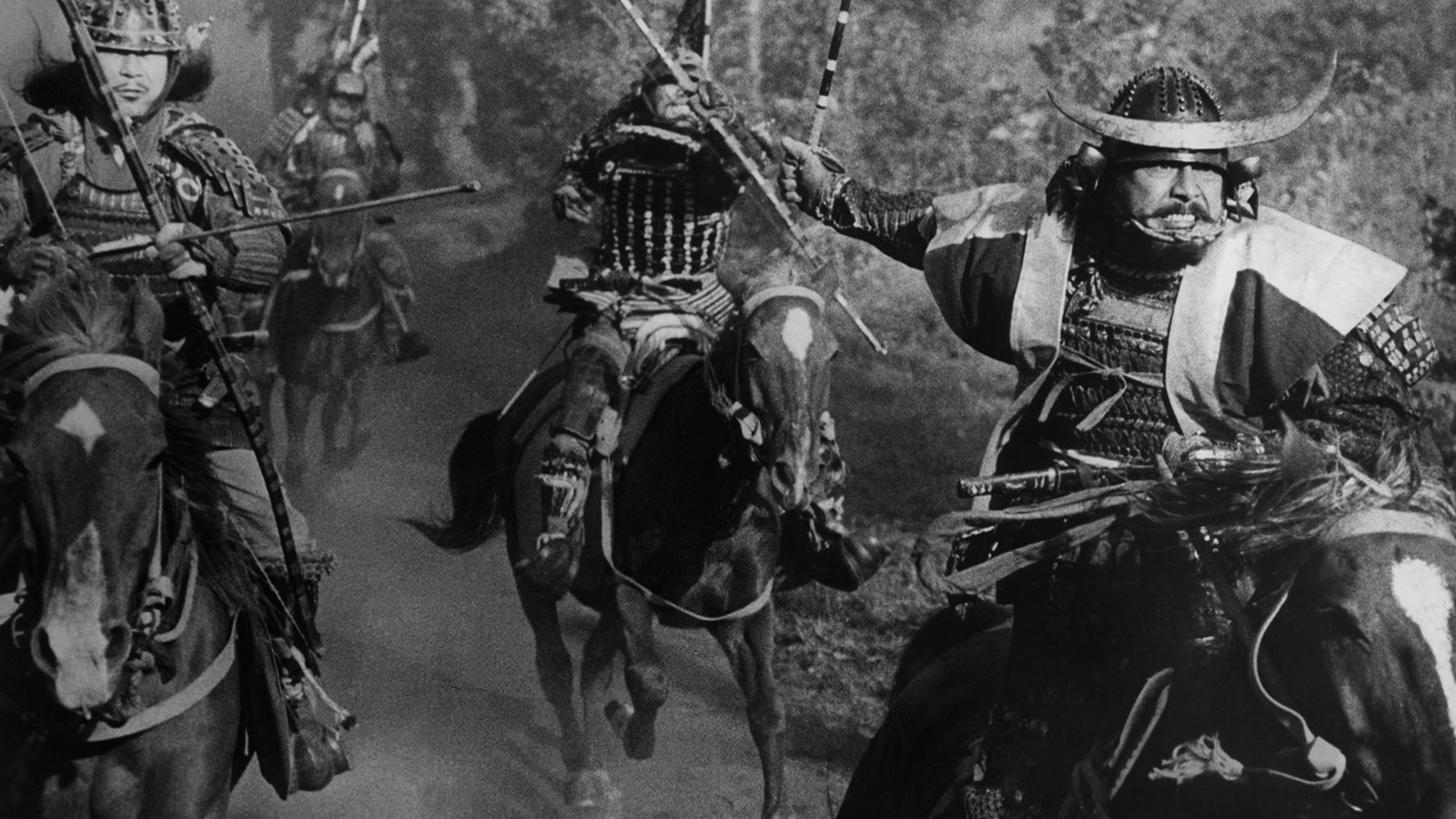
His duty completed, Sanjuro attempts to leave town. He has no interest in celebration. However, he is confronted by his rival Muroto (Tatsuya Nakadai). Muroto feels humiliated and betrayed by Sanjuro’s manipulations. He demands satisfaction. “Draw!” Muroto commands. “I’d rather not,” Sanjuro sighs. “It isn’t worth it.” Of course, Muroto draws. Sanjuro is quicker. Muroto literally explodes in a geyser of blood. However, the victory is hollow. The death is pointless.
In Ghost of Tsushima, the wind subtly guides the player to where they are meant to be, serving as a primal force. Kurosawa was famously a great director of the elements, waiting for days to get the right conditions on Mt. Fuji for a shot of fog lifting in Throne of Blood. Weather is a key part of Kurosawa’s directorial aesthetic, often reflecting the mood of his films: the fog in The Hidden Fortress and Throne of Blood, the rain in Seven Samurai and Kagemusha, the wind in Ran.
This emphasis on nature’s power in these films hints at the futility of the samurai’s struggle. No matter what these men accomplish, it can all be erased by forces beyond their control. This theme is particularly obvious in Kurosawa’s two later color samurai films. In Kagemusha, an aging warlord (Nakadai) hires a thief (also Nakadai) to serve as his double to prevent the decline of his clan in the event of his death. However, that decline can only be delayed. Ran meanwhile riffs on the tragedy of King Lear.
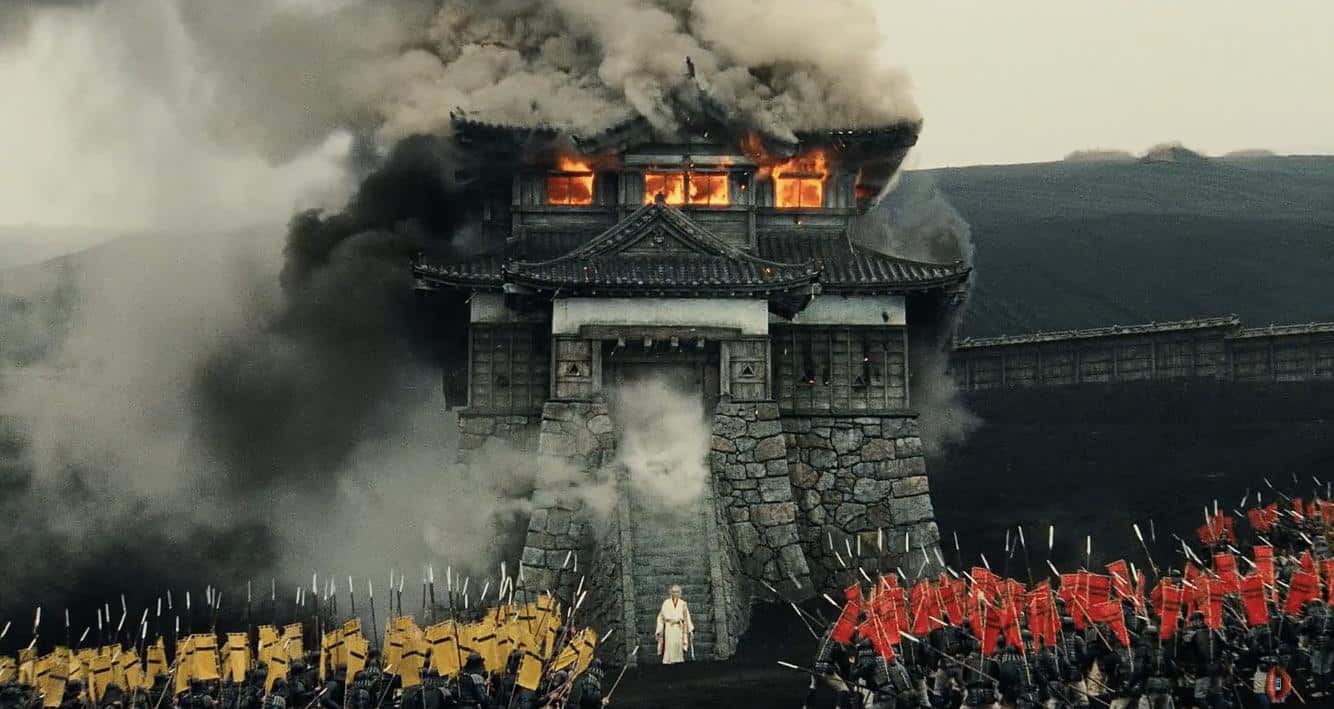
It should be noted that this cynicism is not universal in Kurosawa’s filmography. Ikiru has been described as “one of the triumphs of humanist cinema.” He followed Sanjuro with Red Beard, a period drama about a 19th century doctor that Roger Ebert accurately described as “a passionate humanist statement.” Then again, perhaps Kurosawa’s ambivalence toward the samurai is a humanist statement of itself – a healthy skepticism of “the way of the warrior.”
There’s a lot of complexity underpinning Kurosawa’s samurai movies, lurking beneath their accessible exteriors. Kurosawa’s films are both beautiful to look at and fascinating to think about. They both embody and deconstruct the samurai archetype. They are both specifically Japanese and broadly universal. They draw from a diverse array of sources, while also inspiring a wealth of pop culture in turn.
It’s no wonder that Kurosawa’s samurai films remain vital and vibrant 70 years after Rashomon and 35 years after Ran. They’re still sharp enough to cut in a variety of ways, even after all this time. They exist as several seemingly contradictory things simultaneously. Writer F. Scott Fitzgerald famously argued that the ability to hold “two opposed ideas in the mind at the same time” was the mark of genius. If so, Kurosawa’s samurai films are far more than genius.

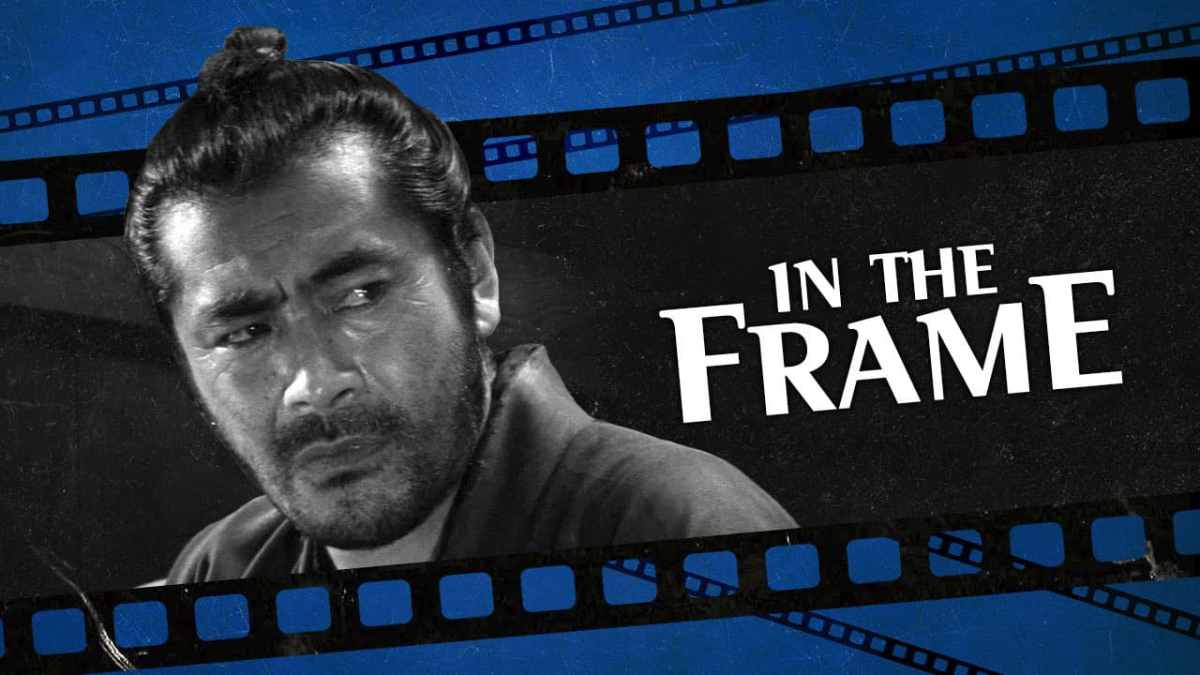




Published: Jul 20, 2020 11:00 am